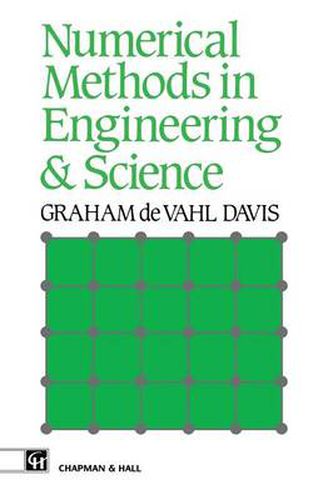Readings Newsletter
Become a Readings Member to make your shopping experience even easier.
Sign in or sign up for free!
You’re not far away from qualifying for FREE standard shipping within Australia
You’ve qualified for FREE standard shipping within Australia
The cart is loading…






This title is printed to order. This book may have been self-published. If so, we cannot guarantee the quality of the content. In the main most books will have gone through the editing process however some may not. We therefore suggest that you be aware of this before ordering this book. If in doubt check either the author or publisher’s details as we are unable to accept any returns unless they are faulty. Please contact us if you have any questions.
Treating numerical methods as a tool for use by the engineer or applied scientist, this introductory text is concerned with the application of such methods to the solution of algebraic, transcendental and differential equations. With a minimum of mathematical theory needed for understanding, the book concentrates on the methods likely to be needed by students in training and later in their careers. The emphasis, as far as differential equations are concerned, is towards finite difference methods, since they form the basis of most introductory courses on numerical techniques. However, an introduction to integral methods is also given. For the same reason, the depth of coverage given to ordinary differential equations is rather greater than that to partial differential equations (especially hyperbolic equations). Nevertheless, the material included on PDEs would be suitable for leading on to more advanced courses, such as one in computational fluid dynamics. Worked examples and problems are provided. Many of the methods can be used with a simple electronic calculator, others involve so much computation that a programmable device is required, and some will need a digital computer. This text is intended for undergraduate engineers and applied scientists. It will service a standard introductory course of approximately 40 hours duration, and equip students to tackle more advanced courses on specialized topics. Worked examples and problems are provided. Many of the methods can be used with a simple electronic calculator, others involve so much computation that a programme is required, and some will need a digital computer. This book should be of interest to undergraduate engineers and applied scientists.
$9.00 standard shipping within Australia
FREE standard shipping within Australia for orders over $100.00
Express & International shipping calculated at checkout
This title is printed to order. This book may have been self-published. If so, we cannot guarantee the quality of the content. In the main most books will have gone through the editing process however some may not. We therefore suggest that you be aware of this before ordering this book. If in doubt check either the author or publisher’s details as we are unable to accept any returns unless they are faulty. Please contact us if you have any questions.
Treating numerical methods as a tool for use by the engineer or applied scientist, this introductory text is concerned with the application of such methods to the solution of algebraic, transcendental and differential equations. With a minimum of mathematical theory needed for understanding, the book concentrates on the methods likely to be needed by students in training and later in their careers. The emphasis, as far as differential equations are concerned, is towards finite difference methods, since they form the basis of most introductory courses on numerical techniques. However, an introduction to integral methods is also given. For the same reason, the depth of coverage given to ordinary differential equations is rather greater than that to partial differential equations (especially hyperbolic equations). Nevertheless, the material included on PDEs would be suitable for leading on to more advanced courses, such as one in computational fluid dynamics. Worked examples and problems are provided. Many of the methods can be used with a simple electronic calculator, others involve so much computation that a programmable device is required, and some will need a digital computer. This text is intended for undergraduate engineers and applied scientists. It will service a standard introductory course of approximately 40 hours duration, and equip students to tackle more advanced courses on specialized topics. Worked examples and problems are provided. Many of the methods can be used with a simple electronic calculator, others involve so much computation that a programme is required, and some will need a digital computer. This book should be of interest to undergraduate engineers and applied scientists.